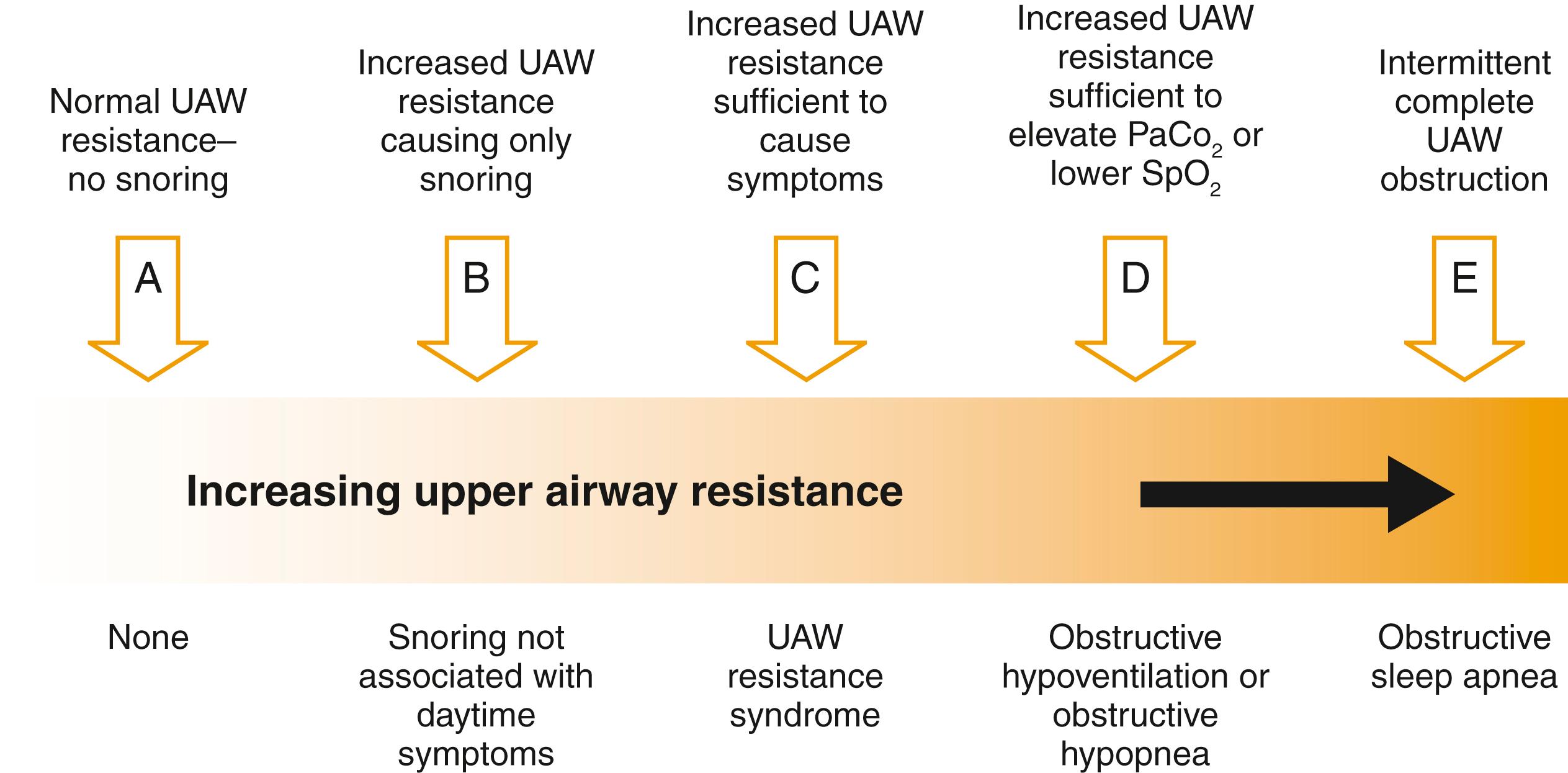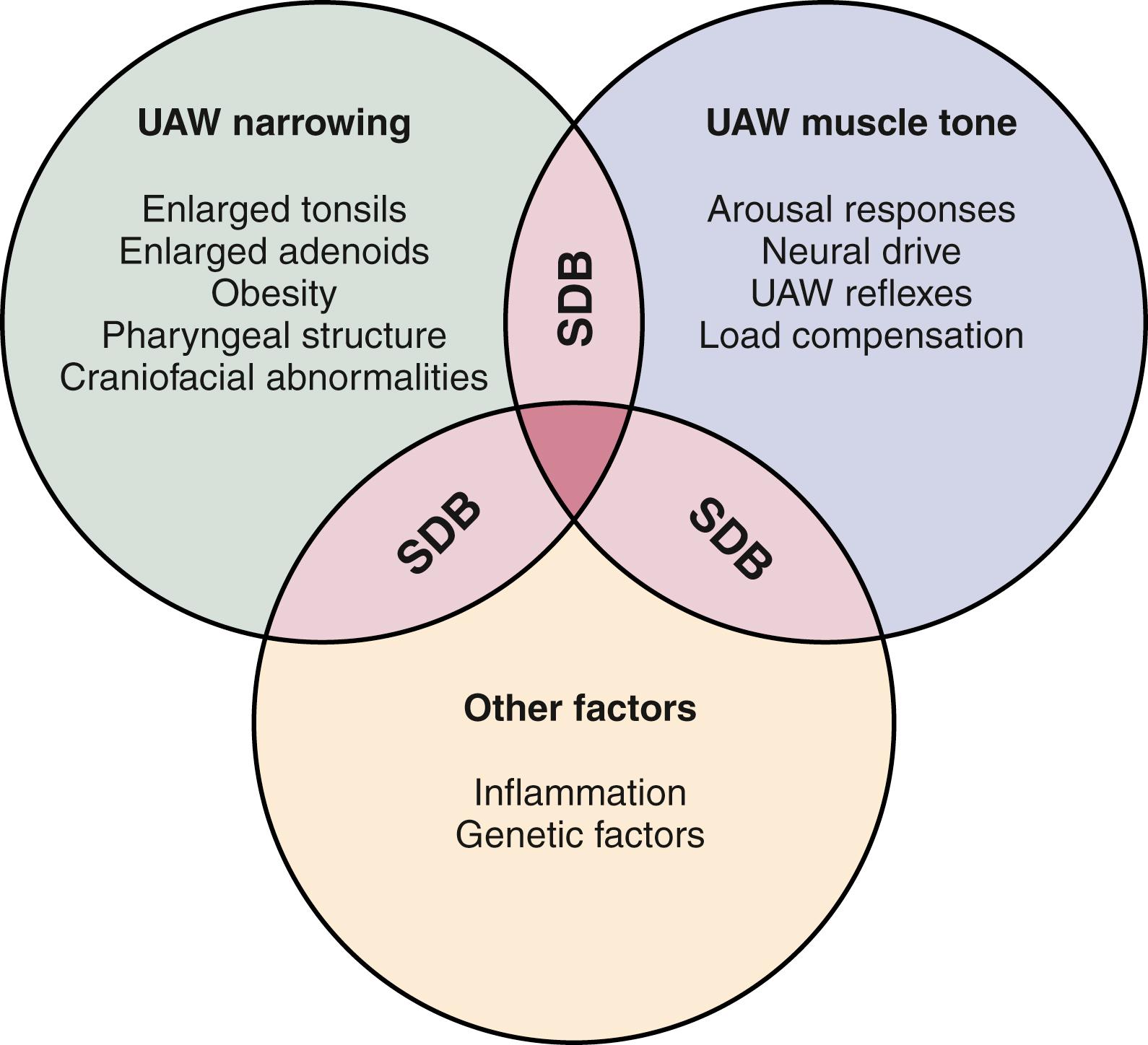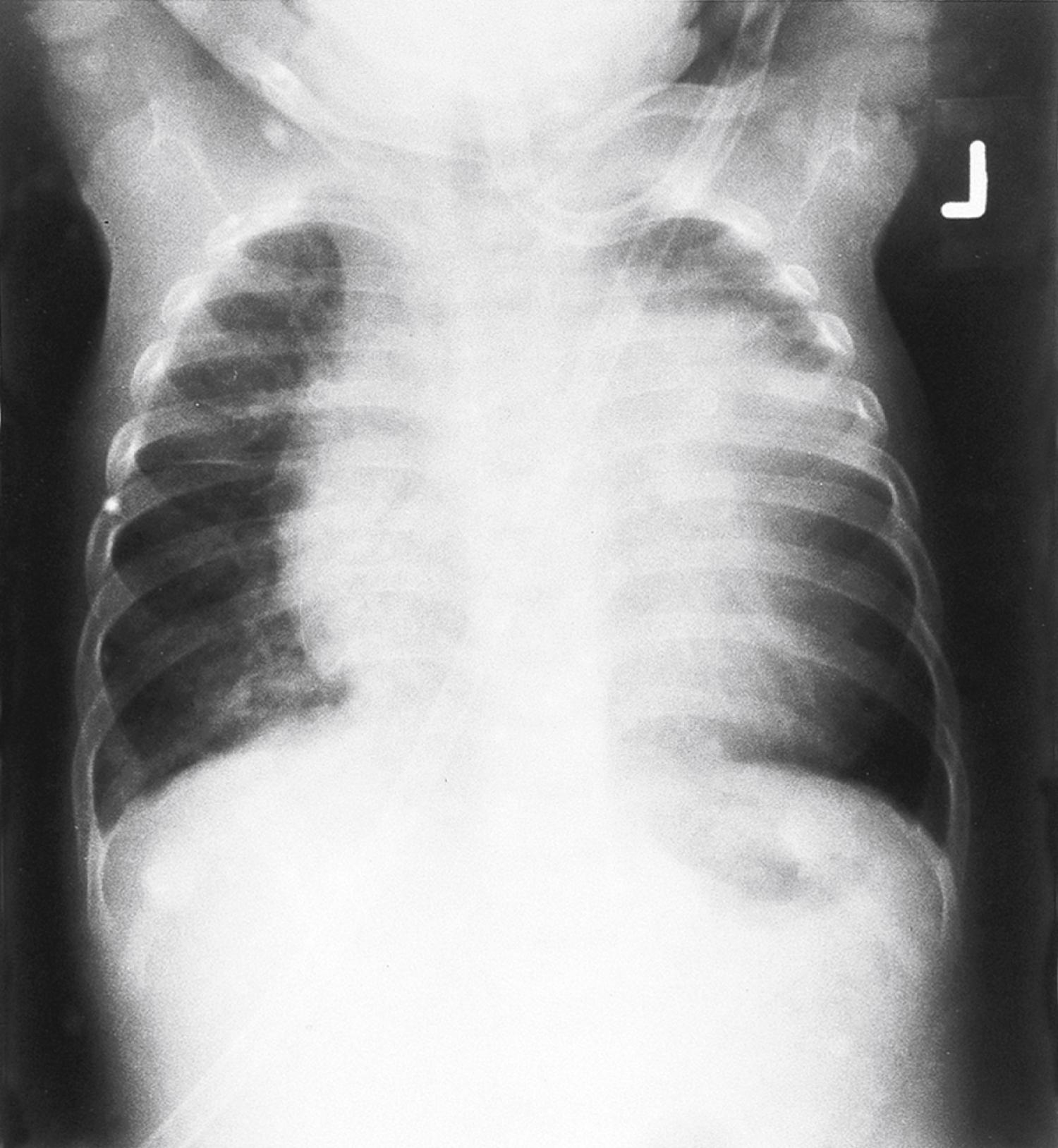Physical Address
304 North Cardinal St.
Dorchester Center, MA 02124
Sleep-disordered breathing is an important cause of morbidity in children and may lead to growth failure, neurocognitive and behavioral abnormalities, cardiovascular dysfunction, and rarely death.
Workup includes a comprehensive history and physical examination. Polysomnography is recommended prior to adenotonsillectomy for selected children with premorbid conditions and for otherwise healthy children for whom the need for surgery is uncertain or for whom there is a discordance between tonsil size and reported severity of symptoms.
Adenotonsillectomy is the first-line therapy for obstructive sleep apnea (OSA) in otherwise healthy children and often for complex patients if the tonsils and adenoids are enlarged.
Children with OSA are at risk for postoperative respiratory complications, and children with risk factors should be admitted overnight after surgery.
The cure rate of OSA after adenotonsillectomy varies among studies, but in general, it is about 60%.
Additional therapies include topical nasal steroids for milder cases, nasal continuous positive airway pressure or bilevel positive airway pressure, orthodontic appliances, weight loss, and tracheotomy.
Drug-induced sleep endoscopy (DISE) allows evaluation of dynamic airway collapse during light sedation that mimics sleep and allows for directed surgical therapy. Emerging surgical therapies include lingual tonsillectomy, supraglottoplasty, uvulopalatopharyngoplasty (UPPP), genioglossus advancement, mandibular distraction, hypoglossal nerve stimulation, and bariatric surgery. Data regarding the outcomes of many of these procedures in children are limited.
Pediatric sleep-disordered breathing (SDB) presents a continuum of severity from partial obstruction of the upper airway that produces snoring to increased upper airway resistance to continuous episodes of complete upper airway obstruction or obstructive sleep apnea (OSA). Although the prevalence of primary snoring in children is 8%, the prevalence of OSA is 1% to 4%. SDB is an important cause of morbidity in children, and early recognition and treatment are important to prevent complications.
The earliest description of pediatric OSA was an obese, red-faced, hypersomnolent boy named Joe, described in an 1837 novel by Charles Dickens, The Posthumous Papers of the Pickwick Club. In the medical literature, William Osler gave an extremely accurate description of pediatric OSA in his textbook in 1892: “At night the child’s sleep is greatly disturbed; the respirations are loud and snorting, and there are sometimes prolonged pauses, followed by deep, noisy inspirations.” Osler also coined the term pickwickian to describe morbidly obese, hypersomnolent patients. In 1956 Spector and Bautista associated pediatric respiratory distress with tonsillitis and adenoiditis. In 1965 both Noonan and Menashe described reversible cor pulmonale in children with adenotonsillar hypertrophy. Guilleminault and colleagues first described the clinical features of pediatric OSA in 1976. In the last quarter of the 20th century, the published literature dramatically increased and expanded our knowledge regarding the potential morbidities and treatment of SDB. Studies from the 1990s also demonstrated that primary snoring in the absence of classic sleep apnea could also be associated with neurocognitive abnormalities.
Classically, childhood OSA has been defined as partial or complete upper airway obstruction during sleep, usually associated with sleep disruption, hypoxemia, hypercapnia, or daytime symptoms ( Fig. 3.1D and E ). The diagnosis of OSA has been based on threshold criteria on the overnight polysomnogram (PSG) such as apnea index (AI) or degree of oxygen desaturation. Children who snored but did not meet the threshold criteria for OSA were considered to be primary snorers (see Fig. 3.1B ), a condition believed to be clinically insignificant. Since the 1990s, upper airway resistance syndrome (UARS) has identified children with elevated upper airway resistance characterized by snoring, labored breathing, and paradoxic breathing without classic apnea or hypopnea (see Fig. 3.1C ). These children exhibit clinical features similar to children with classic OSA and improve after treatment.

Pediatric OSA is caused by fixed and/or dynamic narrowing of the airway that may occur at any of several sites. Most commonly, enlarged tonsils and adenoids are the source of nasopharyngeal and oropharyngeal narrowing. The tissues of the Waldeyer ring, which includes the tonsils, adenoids, and lingual tonsils, progressively enlarge between the age of 2 and 8 years and are largest in relation to the airway between 3 and 6 years of age. Craniofacial abnormalities such as micrognathia or maxillary hypoplasia can also narrow the upper airway, and lower airway abnormalities such as laryngomalacia can affect airway patency. Rapid air movement through a narrowed airway from any of these conditions induces further airway collapse and obstruction. The pharyngeal muscular hypotonia and incoordination found in children with neuromuscular conditions and cerebral palsy produce dynamic airway narrowing.
Given the multiple predisposing factors for pediatric SDB, no single factor accounts for all cases ( Fig. 3.2 ). Large tonsils and adenoids alone do not cause SDB. The obstructive phenotype depends on the ability of the upper airway muscles to compensate for airway narrowing. The current view is that children with OSA have an underlying abnormality of upper airway motor control or tone that when combined with enlarged tonsils and adenoids results in dynamic airway obstruction during sleep.

The mechanisms that underlie the development of the neurocognitive and behavioral deficits found in pediatric SDB are unknown. Proposed mechanisms include sleep disruption, sleep fragmentation, intermittent hypoxia, episodic hypercapnia, alterations in brain neurochemistry, brain inflammation, hormonal changes, changes in cerebral blood flow, or altered cerebral perfusion pressure. Rodent models of OSA have shown that oxidative stress and inflammatory processes lead to neuronal cell loss in the regions of the brain that underlie learning, behavior, executive function, and memory. Other consequences of pediatric SDB include cardiac dysfunction, blood pressure dysregulation, and growth impairment and are likely caused by similar mechanisms. Hypoxemia or sleep fragmentation may affect brain neurochemistry and growth hormone secretion; increased work of breathing with fewer calories available for growth may lead to failure to thrive; large swings in intrathoracic pressure may affect cardiac afterload directly; and increased circulating inflammatory mediators, endothelial dysfunction, and increased insulin resistance—particularly in obese children—are thought to contribute to cardiovascular morbidity. The etiology of enuresis is unclear but may be secondary to increased urine production as a result of OSA or abnormal secretion of antidiuretic hormone (ADH), or it may merely reflect increased awakenings and arousals.
Mounting evidence suggests a familial predisposition to the development of OSA, because genetic-epidemiologic surveys of families of index patients with OSA have demonstrated a higher prevalence of SDB in family members compared with the general population. Genes associated with obesity, craniofacial structure, and muscle development of the upper airway soft tissues are likely involved in the development of OSA, but further work is needed to identify specific loci. Gene-specific polymorphisms may explain the variability in morbidities associated with SDB. The apolipoprotein E ε-4 allele is more common in nonobese children with OSA compared with controls, particularly in children with neurocognitive dysfunction.
The prevalence of snoring has been estimated from community-based cross-sectional surveys of parental reports of snoring and difficulty breathing during sleep. A meta-analysis of published studies found the prevalence of snoring to be 7.45% (95% confidence interval [CI], 5.75 to 9.61). The prevalence of SDB, estimated from parental reports with additional diagnostic testing, ranges from 0.1% to 13.0%, but most studies suggest a prevalence of 1% to 4%. The peak incidence of pediatric OSA is between 2 and 6 years of age, when the tonsils and adenoids are largest in relation to the size of the underlying airway. A second peak occurs during adolescence with the development of the adult body habitus and craniofacial structure. Boys are affected at rates that are 50% to 100% higher than girls. Black children have been reported to be at increased risk (3.5 times) for developing OSA and to be at increased risk for the morbidity associated with OSA. Most studies report that overweight/obesity is an independent risk factor for SDB. Some data suggest that weight status may have more of an influence in older children, and adenotonsillar hypertrophy is considered the major risk factor in younger children. Prematurity and asthma are also risk factors for SDB, but studies have reported conflicting results regarding the effects of allergic rhinitis, exposure to passive cigarette smoking, and low socioeconomic status. ,
Snoring is the most common symptom of SDB, and OSA is extremely unusual in children who do not snore. Other nighttime symptoms include apneic pauses, snorting, gasping, restless sleep, frequent arousals, frequent awakenings, sleeping with the neck hyperextended, unusual sleeping positions (e.g., sitting, propped up on pillows, fetal position), diaphoresis, enuresis, stridor, and parasomnias. A resuscitative snort often follows the apneic episodes. Children may exhibit paradoxic inward rib cage motion, but cyanosis is rarely observed. In children, OSA occurs mainly in rapid eye movement sleep; therefore symptoms may be absent for a significant portion of the night.
Hypertrophy of the tissues of the Waldeyer ring may lead to daytime obstructive symptoms that include mouth breathing, hyponasality, chronic rhinorrhea, nasal obstruction, and dysphagia. A history of any of these symptoms should lead to an investigation of nighttime symptoms that include snoring and possible apnea. During an acute upper respiratory infection, enlargement of the lymphoid tissues of the Waldeyer ring can result in snoring and nighttime breathing difficulties; these symptoms may be temporary and resolve once the infection resolves, but they may signal the onset of chronic upper airway obstruction.
Failure to thrive has been reported to occur in approximately 10% of children and 42% to 56% of infants with OSA. Several reports have documented improvement in growth for children with failure to thrive and OSA after adenotonsillectomy.
Early reports found systemic hypertension in 10% to 25% of children with OSA, although these children were severely affected. Marcus and colleagues found that children with OSA ( n = 41) had significantly higher diastolic blood pressure than children with primary snoring ( n = 26), although no significant difference was found in systolic blood pressure between the two groups. Body mass index (BMI) was a significant predictor of elevated blood pressure. Amin and colleagues found significant increases in blood pressure surge, blood pressure load, and 24-hour ambulatory blood pressure in children with SDB (apnea-hypopnea index [AHI] >5) compared with controls, effects that were independent of BMI. Although the data are heterogeneous, several meta-analyses have shown a higher risk of hypertension in children with more severe SDB. Ventricular hypertrophy, reduced ejection fraction, wall motion abnormalities, ventricular dysfunction, cor pulmonale ( Fig. 3.3 ), and increased mean arterial pulmonary pressures have been demonstrated in children with SDB. Studies have also demonstrated a correlation between cardiac dysfunction and OSA severity. However, routine cardiac evaluation is not recommended in children with severe OSA who are otherwise healthy (see the section “Ancillary Studies”). Most of the cardiovascular morbidities are subclinical and improve after adenotonsillectomy.

Whereas daytime sleepiness is extremely common in adults with OSA, it is a relatively infrequent finding in children and occurs in about 13% to 20% of subjects. Behavioral and neurocognitive difficulties have been found in 8.5% to 63% of children with SDB. Behavioral problems include attention problems, hyperactivity, aggression, emotional distress, irritability, somatic complaints, and difficulties with peers. The neurocognitive skills affected include memory, recall, vigilance and attention, mental flexibility, and visuospatial tasks. Children with primary snoring but otherwise normal sleep study indices have also been shown to have lower scores on measures of behavior and cognition using a battery of neurobehavioral tests compared with control children, although the mean scores for both groups were still in the normal range. Studies that used standardized behavioral and neurocognitive assessments have documented significant improvements in test scores after adenotonsillectomy in children with SDB, which suggests that neurocognitive deficits are potentially reversible.
Poor academic performance has also been found in several studies of children with SDB. Gozal evaluated 297 first-grade children in the lowest 10th percentile of their class by overnight pulse oximetry and transcutaneous CO 2 measurement. Fifty-four children demonstrated sleep-associated gas exchange abnormalities, and 24 of these children underwent adenotonsillectomy. The mean grades of the children who underwent surgery increased significantly during the following academic year compared with the children whose parents refused surgery. These findings also suggest that the neurocognitive difficulties found in children with SDB are reversible with treatment. A meta-analysis of 16 studies from 12 countries of children aged 5 to 17 found that SDB was significantly associated with poorer academic performance for core academic domains related to language arts, math, and science and with unsatisfactory progress/learning problems, but not with global school performance.
Become a Clinical Tree membership for Full access and enjoy Unlimited articles
If you are a member. Log in here